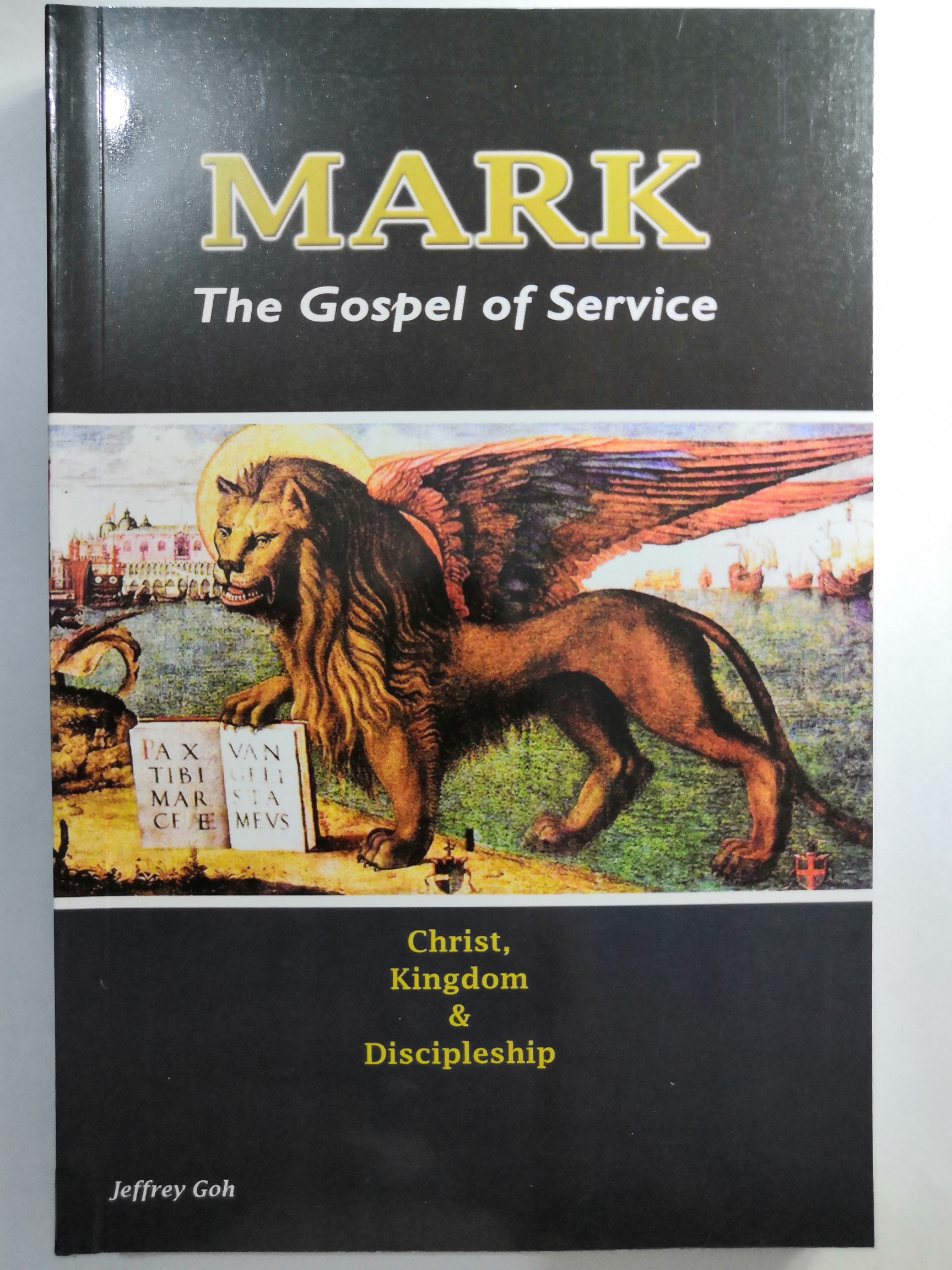35 James and John, the sons of Zebedee, came forward to [Jesus] and said to him… “Appoint us to sit, one at your right hand and one at your left, in your glory.” … 41 When the ten heard this, they began to be angry with James and John. 42 So Jesus called them and said to them, “You know that among the gentiles those whom they recognize as their rulers lord it over them, and their great ones are tyrants over them. 43 But it is not so among you; instead, whoever wishes to become great among you must be your servant, 44 and whoever wishes to be first among you must be slave of all. 45 For the Son of Man came not to be served but to serve and to give his life a ransom for many.” [Mark 10:35-45, NRSV]
The Gospel of Mark is unique in many ways. The first to have been written among the four canonical Gospels, Mark is the shortest and the most direct in narrating Jesus’ life and ministry. It is fast-paced and distinctive in presenting Jesus as the faithful Son and the Suffering Servant of God. Underscoring Jesus’ challenge to his disciples to enter into genuine service, Mark gives us a painful narrative of steadfast focus on God’s kingdom, and of unremitting endurance of suffering along the way. From a focus upon Jesus and his vocation to his demands on disciples, Mark’s Gospel underscores a discipleship of cost and joy. In this, Mark’s tale is unrelenting: the ears and eyes of the disciples, not to mention their hearts, have got to be opened before they can be cross-bearers for God’s kingdom in imitation of Christ.
Our book pictured above, which grew out of a short course on the Gospel of Mark in our Theological Formation Programme for the Laity, is a sequel to an introductory course on Christology. Printing costs are sponsored by a group of generous Catholics. Sale proceeds from this book are entirely donated to Yayasan Lasallian Kuching in aid of their work to help educate poor students and slow learners (“the Least, the Last, and the Lost”).
Our previous book-length publication on one book of the Bible, titled “Living the Gospel: St. Paul’s Call to Match Words with Actions in First Corinthians,” is easy to follow. Its contents organized according to the ten pastoral problems in Corinth St Paul addresses in the epistle, readers readily pick at will and read their topics of interest in that book.
The same ease may not be had when they turn the pages of our new publication on the Gospel of Mark. In following Mark’s storyline, the text does yield one quick round of reflection on the Gospel. Readers, however, may have to consciously trace the itinerary to pick out favourite stories. Furthermore, comprising in part a collection of essays of reflections on the Gospel, readers may notice some repetition as well. Having shared and discussed some of these reflections with friends who have become sounding boards for identifying the range of favoured topics, we have noted themes and stories that might be of varied interests to readers.
To facilitate your choice, we offer below a list of suggested topics which you can selectively delve in, and where you can locate them in the book.
PAGES:
1-7 Theological and geographical aspects and three-part plot of the Gospel.
8-21 Eight overarching words summing up major themes in the Gospel.
24-59 TRIPTYCH: [i] Baptism and identity-revelation: heaven-rending, Spirit-descent, voice of love; [ii] Temptation and ministry-preparation: intention-purification, God-focus; [iii] Kingdom-preaching: kingdom-orientation, repentance, faith.
60-66 Sabbatical exorcism in synagogue.
66-72 Prayer vs. activity; mobile pastoral outreach vs. residential fame.
72-76 Distancing lepers vs. touching in compassion and sameness.
85-88 Creation-consciousness vs. sabbath-consciousness.
88-92 Prioritising the human person ahead of strict rules.
94-97 Binding the strong man; unforgiveable blasphemy.
98-105 Parable of the Sower: sower or soil?
106-22 Four mighty works: Stilling storm; legion and swine; two women’s blood flow; the power of “touch”.
122-26 Hometown rejection; identify with Jesus and stay strong.
130-44 Grand feeding (5k); suffering & esplagchnisthe (compassion); praise God & pass bread.
147-52 Corban and legalism.
153-56 Syrophoenician woman, salvation and kingdom-attitude.
157-64 Healing a deaf-mute; implications of ephphatha.
169-72 Healing blind man at Bethsaida; significance on eve of journey to Jerusalem.
176-85 1st passion-prediction; lessons from Peter’s mistaken interference.
185-92 Transfiguration; events on mountain; mission on the plain.
193-97 2nd passion-prediction; greatness & service; true freedom & spiritual worldliness.
197-99 The Eldad-Medad rule.
200-02 On taking out a hand, a foot, an eye.
202-14 The powerful story of Jesus’ encounter with a rich man: wealth & salvation.
214- 21 3rd passion prediction; key teachings on service & suffering.
221-30 Healing blind Bartimaeus; sight & discipleship; behaviour towards those in need.
232-39 Fruitless tree and out-of-season temple; word of faith & matching actions.
243-46 The heart & faith-life.
247-65 Jesus’ stunning teaching on the law of the gift & the widow’s mite.
266-68 Lavish devotion & heinous treachery; woman anointing Jesus before burial.
268-73 Solemn Last Supper; sacrifice-emphasis; memoria-eucharistia-diaconia.
273-83 Far-reaching implications of the garden struggle; from fear to freedom.
289-97 Simon of Cyrene and implications for our own cross-carrying.
297-315 What Jesus’ cry from the cross says about orientation of our freedom towards God.
315-19 The significance of the centurion’s confession at the foot of the cross.
321-29 Galilee and our discipleship.
The Lion of St Mark is pictured with the greeting “Pax Tibi Marce Evangelista Meus” which is “Peace unto you, Mark, my Evangelist”.
Copyright © Dr. Jeffrey & Angie Goh, June 2022. All rights reserved.
You are most welcome to respond to this post. Email your comments to jeffangiegoh@gmail.com. You can also be dialogue partners in this Ephphatha Coffee-Corner Ministry by sending us questions for discussion.

